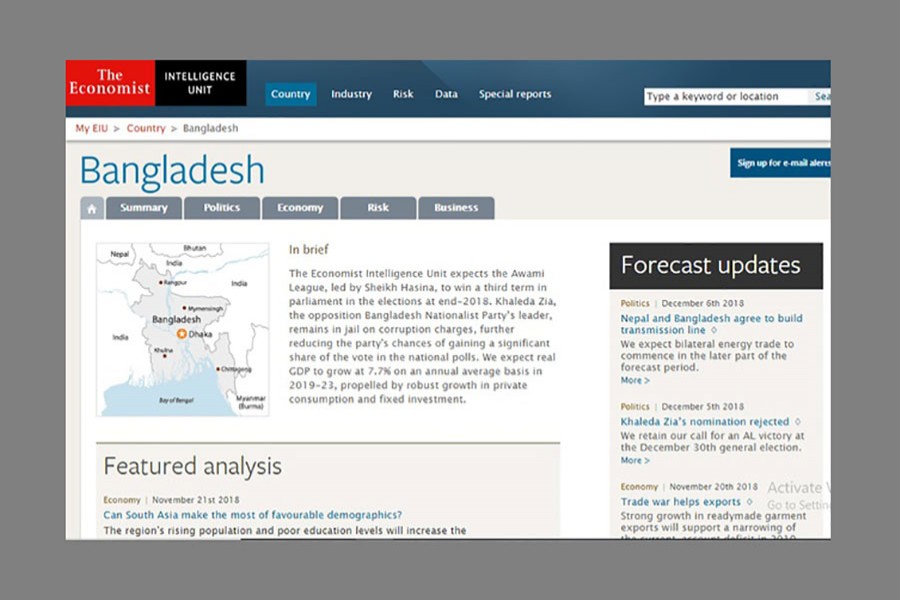The Economist Intelligence Unit, or EIU, expects the ruling Awami League will return to power in the Dec 30 parliamentary election.
In the latest country briefing note, the EIU, the research and analysis division of the Economist Group, said the party has overseen solid economic growth and its re-election will be assisted by patronage at local level.
The political environment will be characterised by frequent bouts of social unrest during the 2019-23 forecast period, according to the report released this month.
Along with the immediate threat of terrorist attacks, opposition protests and public demonstrations will pose risks to political stability, it said.
According to the forecast by the London-based group, Bangladesh’s economic growth would remain robust and real GDP will grow by an average of 7.7 per cent per year in 2018/19-2022/23, bolstered by strong increases in private consumption and gross fixed investment.
The report also specifically mentions the reputation of Prime Minister Sheikh Hasina as being the key factor in election. It states that Hasina remains the “most popular candidate”, according to numerous local opinion polls.
The country’s impressive record of economic growth and socio-economic development under the Awami League administration, coupled with a lack of an effective opposition election campaign, will be enough to fend off any challenge posed by the BNP or the Jatiya Oikya Front more broadly, the EIU said.
The report adds that a win for the Awami League will be important in sustaining foreign investment, and will also support the administration’s drive to expand and deepen private sector participation in the economy.
Following such a win, Bangladesh is expected to continue to exploit its strategically important location on the Bay of Bengal to extract concessions and economic assistance from India, China and Japan, said bdnews24.com citing the report.
But Bangladesh’s relations with Myanmar will remain tense in the medium term owing to the Rohingya refugee crisis which will remain severe, at least in the early part of the forecast period.


